How to write Chinese on a Russian keyboard. This is what a Chinese keyboard looks like
Searching for hieroglyphs on smartphones is the most convenient and easy way searching for hieroglyphs (compared to searching in paper dictionaries and). You will need any smartphone based on iOS, Android or Windows Phone. For a Chinese language learner, a smartphone can save a lot of time.
Now we need Chinese keyboard(which will allow you to type text)
iPhone
Entering characters
You can enable handwriting input of hieroglyphs in the main phone settings:
Settings > General > Keyboard > International
Select Chinese simplified and handwritten input.
Finding the meaning of hieroglyphs
1) Pleco
This is the most important program for learning Chinese.
There is a word search using pinyin (typed using an English keyboard), a search by typeface, a reader, and a search for hieroglyphic inscriptions when you point the camera.
But I note that this program provides translation only into English language. If your knowledge of English is insufficient, use these programs only to determine pinyin, and then type the word in your browser into BCRS.
Android
Entering characters
1) Set the keyboard to Go keyboard and select: 中文 (手写) . Now we can open the dictionary.
If you have the Pleco program, and you do not intend to type text or SMS outside the program, then installing a keyboard is not necessary; Pleco allows you to enter hieroglyphs by style.
Finding the meaning of hieroglyphs
1) Pleco
The functionality is the same as on iOS, see above.
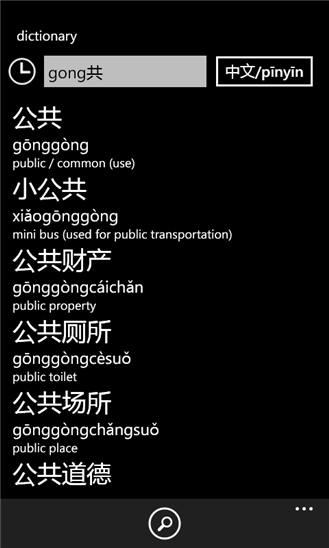
Contains a dictionary and the ability to add words to bookmarks. It also allows you to enter many hieroglyphs at once (for example, a whole sentence) similar to the online BCRS dictionary. But the translation is only into English.
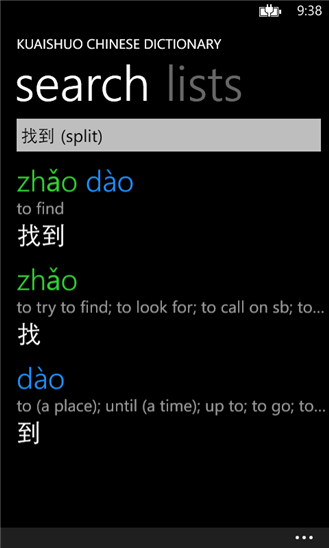
Free English-Chinese and Chinese-English offline dictionary.
To search for a hieroglyph on any device, you can also use the sites: BCRS. Russian-Chinese, Chinese-Russian dictionary and Chinese-Tools English-Russian, Russian-English dictionary.
To start. If your computer displays hieroglyphs incorrectly or you see squares instead, then that way .
There are so many hieroglyphs and they all must somehow fit on the keyboard. This is how you imagine huge keyboards with a thousand keys. But in reality everything is much simpler. Hieroglyphs can be entered in several ways. The most common method is the one used by most foreigners who learn Chinese - characters are entered using pinyin transcription. You enter the Latin transcription of any hieroglyph and you get a choice of the entire list of hieroglyphs that can be read this way. Tones are not taken into account. One thing... in order to write the hieroglyphs that we need, we need to know how they are read.
There is a program of this kind in the standard Windows language pack, but I prefer to use the Google Pinyin program. You can download the program.
For example, we want to write the character 马 (horse) and we know that it is read as “ma”. We enter ma and we get this...
All that remains is to choose the hieroglyph that we need - here it is in third place. Not so difficult, right? Knowing how hieroglyphs are read makes writing very easy.
What to do if you don’t know how to read a hieroglyph. You look at the inscription, the dictionary is at hand, and how do these Can you find hieroglyphs there if you don’t know how to read them?
There are three ways. First is to use electronic dictionaries with support handwriting. Simply put, such dictionaries allow you to manually copy a hieroglyph into the program window and give you the reading of this hieroglyph and the translation. A Chinese-Russian electronic dictionary of this kind is possible. This dictionary supports handwritten input. The dictionary is simply wonderful. The handwriting button is located next to the Search button.
As for the dictionary, which can be installed on your phone or tablet. A good Chinese-Russian dictionary is possible, but, unfortunately, it does not support handwriting input. To translate, you need to know the reading of the hieroglyph. To select Russian on the site, switch the language in the upper right corner of the page.
There is an excellent Chinese-English Dictionary, which not only supports handwriting, but also allows you to recognize printed text using your phone camera. Although not all functions are free, sometimes the dictionary can be very useful. The dictionary is downloaded to mobile phone or tablet.
Second a way to introduce hieroglyphs if you don’t know how to read them. To use this method, you need to know the rules for writing hieroglyphs or the order of writing traits that make up the hieroglyph. Knowing the order of features, you can, using various programs input, enter each line in turn. The result will be the desired hieroglyph. Typically, such input programs are present on mobile devices. They can be easily added when installing the Chinese language.
And finally third way. It's called Wubi Xing. This method is used mainly by the Chinese, since for a student of Chinese this method will be quite difficult. In order to be able to use this input method, you need to know all the hieroglyphic keys and graphemes. The graphemes are arranged on the keyboard in a certain way, as in the picture below. Complex hieroglyphs are parsed into components . Then these parts are entered one by one from the keyboard, forming the final hieroglyph. Knowing the order of writing graphemes in a hieroglyph, you can learn to type very quickly.
If you have already started learning Chinese, then this moment will definitely come. The moment when you need to print this or that character and even text in Chinese.
There are several ways to do this. Let's consider one of them.
This is inputting Chinese characters using the program NJstar Word Processor. It is convenient, simple and understandable. The program is a professional tool for entering hieroglyphs and not only for that. There are many useful tools hidden in it. And one more important plus: it weighs only 5 Mb.
The program also includes a Chinese-English dictionary, searching for the desired characters by radicals and number of strokes. Entering both simplified and traditional characters. And also a convenient tool that allows you to show the pronunciation of both an individual hieroglyph and the entire text in Pinyin transcription
Working with the program NJstar Word Processor
After installing the program, we make some settings for convenience. It is better to move the input panel to the top so that it is always in front of your eyes. To do this, click on this arrow.
First, let's look at the main purpose of the program.
Entering Chinese characters using NJstar Word Processor.
The program provides several input systems different ways.
1.
Entering Chinese characters using Pinyin transcription
Moreover, this can be done in three different ways
on-line pinyin
direct input of a hieroglyph in a document, if you know the syllable and its tone. In the list that opens, select the desired hieroglyph.
standard pinyin
standard pinyin, you just need to know the syllable with which the hieroglyph is pronounced, and then select the desired hieroglyph from the list provided. The syllable is printed in the input window automatically. 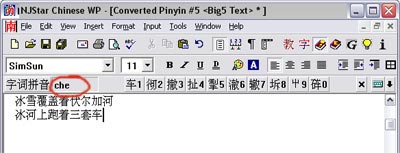
We use these buttons to scroll the list.

After finding the desired hieroglyph, press the number next to the hieroglyph on the keyboard. The desired hieroglyph appears in our document.
To clear the input window, press
double pinyin
Entering established words using a shortened version of Pinyin. That is, you enter part of the syllable of the first hieroglyph, without tone, then enter the second syllable and in the list that opens you can select a ready-made word written in hieroglyphs. But for fast printing you need to know the shortened version of pinyin.
2.
Entering characters using the Chinese phonetic alphabet "Zhuyin"
Hieroglyphs are entered using the “Zhuyin” phonetic system, of course you need to know it. 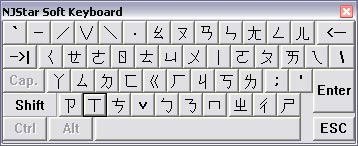
3.
Using a digital code assigned to each character in big5 and GB encodings
You enter the code number of the desired hieroglyph using tables with encodings.
The program also has more than 20 methods for entering Chinese characters. But they are less common. 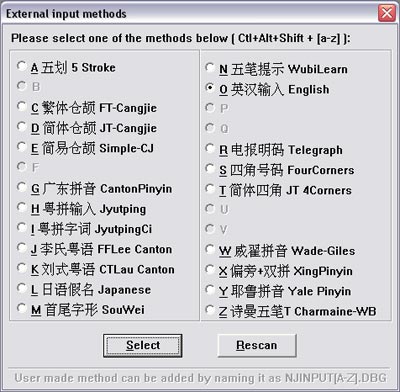 Of these methods, the method of entering hieroglyphs using English is quite convenient. “English” That is, if you know English. You choose this method and, by typing in the input window English word you can choose it Chinese translation from the proposed list.
Of these methods, the method of entering hieroglyphs using English is quite convenient. “English” That is, if you know English. You choose this method and, by typing in the input window English word you can choose it Chinese translation from the proposed list.
To change the input system you can use hotkeys or go to the menu and select the desired method for entering hieroglyphs.
To insert Russian words you need to select the menu and select
To show a transcription of the text, you need to select the text and use the second mouse button to open the context menu. There already select “Convert hanzi to pinyin” 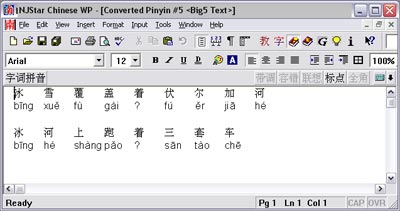
If you want to translate a hieroglyph, just hold the mouse cursor over it a little and its translation into English will pop up.
To find the desired hieroglyph, you can use the hieroglyph search by radical and number of strokes. To do this, go to the menu again and select Radical lookup 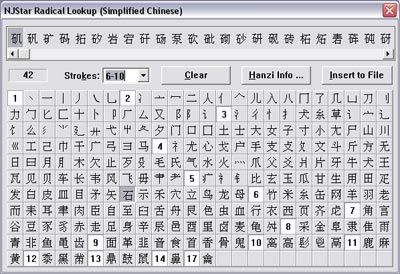
To select simplified or traditional hieroglyphs, go to the menu
The finished document can be easily saved in text format, preserving all your hieroglyphs. In the future, you can open it in Microsoft Word and continue working.
You can download the program in the section
Today, there are thousands of Internet users in almost every country in the world. There are millions of websites and blogs on the most different languages. For example, there are about 16 million bloggers in China.
Have you ever wondered how the Chinese type on a computer? After all, Chinese writing does not consist of letters, but of hieroglyphs. Moreover, the total number of hieroglyphs exceeds 80 thousand, although most of them are now practically not used. However, for writing modern texts you need at least 1500–3000 hieroglyphs!
It is quite difficult to imagine a keyboard with thousands of hieroglyphs. Surely many people think that a Chinese keyboard looks something like this.
In reality, everything is much more complicated. In China, there are several text input options and there is no single standard keyboard.
Some people use a regular keyboard and special text input programs that can convert the entered characters into written Chinese characters.
Others use special keyboards or enter text using transliteration (phonetic input). In this case, the sound of a specific hieroglyph is entered using a regular keyboard with the Latin alphabet. The character is then recognized using Pinyin, the official romanization system for the Chinese language.
Users who need to type very quickly often use another input method - Wubi. The Ubi-specific keyboard is similar to the standard QWERTY keyboard, but has multiple characters for each button. This is one of the most common input options. The secret is that everything Chinese characters can be “assembled” from the same parts - graphemes. There are about 200 such parts in total. They tried to fit them on the keyboard. This is what it looks like.

Older people who are accustomed to writing by hand often use email.
As you can see, there is no standard input method in China, there are dozens different options, so keyboards can look completely different.
Marketium - positivity, inspiration and life hacks
Click Like →
to get the best
Facebook posts.
The contents of this Site, such as articles, text, graphics, images and other materials posted on this Site (“Content”), are for informational purposes only. No representations or warranties of any kind, express or implied, are made with respect to the Content provided on this Site as to its completeness, accuracy, reliability, suitability or availability for any purpose. Any use of the Content is at your own risk. Content should not be considered as professional advice for legal, medical, financial, family, risk management or any other professional advice. If you require any specific advice, please consult a licensed professional who is an expert in the relevant field. The Publisher is not responsible for any injury or damage to the reader that may result from the reader acting on or using the Content contained on this Site.
Now that your computer has learned to understand eastern writing(see previous post), let's start with computer calligraphy. After reading this post and trying it out in practice, you will learn write in Chinese, directly in hieroglyphs, even without using a special “Chinese keyboard”.
Pinyin is used to type characters. Pinyin is the romanized syllables of the Chinese language. Verbatim from Chinese汉语拼音 - "Recording the sounds of the Chinese language." Pinyin has official status and has been used throughout the world since the eighties of the last century.
So, change the keyboard to Ch mode (if the third layout interferes, assign a different key combination to switch Ch-Ru and Ru-Ch).
We will have a panel that looks like this (you can “restore the panel” to make it easier to understand):
On this moment you can use the buttons:

Quick switching between English and Chinese and back. Not particularly relevant for us.

Punctuation is European or Chinese. Commas and periods in Chinese writing have a slightly different style.

Switching from traditional to simplified characters and back. Stay simple and get to the action.
Let's say we want to type the phrase:
吃一堑,长一智
In pinyin, it will look like this:
chī yī qiàn, zhăng yī zhì
Enter on the keyboard with Latin letters chi , press the spacebar and we have a hieroglyph! 吃 , what in in this context means " suffer, endure, endure" . Similar? Press space again and move on to the next one:

Type yi, space. Now wait. While the hieroglyph is active (see the underscore below?), press the regular arrow key "to the right" or "left". An additional menu will open, offering different spellings. In Chinese, one syllable can sound five, ten, or twenty different characters, just as one character can mean different things and be pronounced differently. And keyboard pinyin also does not take into account tones and, in fact, combines several syllables. Arrow keys " up" And "down" select the style we need. In our case, 一 - which most often means " one, whole, as soon as" or serves to indicate a short action .





